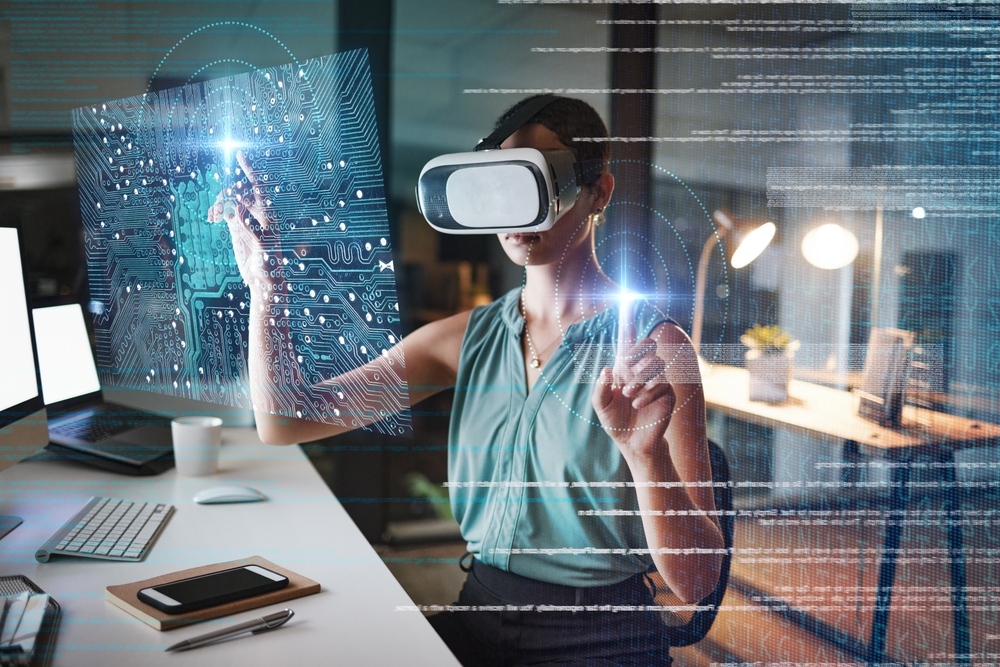Holographic Workstations: The Next Frontier in Computing
In a world where digital interfaces are continuously evolving, holographic workstations are poised to redefine our interaction with computers. This cutting-edge technology, once confined to the realm of science fiction, is now on the cusp of becoming a tangible reality. As we stand on the brink of this revolutionary shift, let's explore how holographic workstations could transform our digital workspace, blending the physical and virtual worlds in ways we've never seen before.

Early prototypes of holographic workstations emerged in research labs during the mid-2010s. These systems used a combination of advanced optics, motion sensors, and powerful processors to create floating, interactive displays. While impressive, they were far from practical for everyday use, often requiring bulky headsets or specialized rooms.
Breaking free from the flat screen
The fundamental promise of holographic workstations lies in their ability to liberate digital content from the confines of flat screens. Instead of being limited to windows on a monitor, users can manipulate 3D objects in mid-air, arrange multiple floating displays around them, and interact with data in a more intuitive, spatial manner.
This shift from 2D to 3D interfaces opens up new possibilities for data visualization, design work, and collaboration. Imagine architects walking through virtual models of their buildings, or surgeons examining detailed holographic representations of patient anatomy before a procedure. The potential applications span across industries, from engineering and healthcare to education and entertainment.
The technology behind the magic
At the heart of holographic workstations are advanced light field displays. These devices project images with different intensities and directions, creating the illusion of depth and allowing viewers to see objects from multiple angles without special glasses.
Complementing the display technology are sophisticated tracking systems that monitor user movements and gestures. This allows for natural, intuitive interactions with holographic elements – users can reach out and “touch” virtual objects, manipulating them as if they were physical items.
Powering these systems are high-performance GPUs and specialized processors capable of rendering complex 3D environments in real-time. As these components become more powerful and energy-efficient, we’re inching closer to compact, consumer-friendly holographic workstations.
Current state of the art
While fully realized holographic workstations are still in development, several companies and research institutions are making significant strides. Microsoft’s HoloLens, while primarily an augmented reality headset, offers a glimpse into the potential of holographic computing. It allows users to place and interact with 3D holograms in their physical environment.
Other players like Magic Leap and Looking Glass Factory are pushing the boundaries of light field display technology. Their latest prototypes demonstrate increasingly realistic and interactive holographic experiences, though they’re still primarily aimed at developers and enterprise users.
Challenges on the horizon
Despite the exciting progress, several hurdles remain before holographic workstations can become mainstream. One major challenge is achieving high-resolution, full-color holograms with a wide field of view. Current systems often struggle with image quality or require compromises in terms of viewable area.
Another significant obstacle is developing intuitive user interfaces for 3D environments. While gestures and voice commands work well for simple interactions, more complex tasks may require new paradigms of human-computer interaction.
Energy consumption is also a concern. Rendering detailed holograms in real-time demands substantial processing power, which translates to high energy usage. Finding ways to make these systems more efficient will be crucial for their adoption in portable devices.
The future workspace
As holographic technology continues to mature, we can envision a future where traditional monitors and keyboards are replaced by customizable, holographic interfaces. Your workspace could be anywhere – a café, a park bench, or even mid-flight – with your entire digital environment projected around you.
Collaboration in this holographic future could be transformative. Remote team members could appear as lifelike holograms in your space, allowing for more natural and engaging virtual meetings. Shared holographic workspaces could revolutionize brainstorming and project planning, with teams manipulating 3D models and data visualizations in real-time.
While we’re still years away from this holographic utopia, the foundations are being laid today. As researchers and companies continue to push the boundaries of what’s possible, we’re inching closer to a world where the line between physical and digital workspaces blurs, opening up new frontiers in productivity and creativity.
The journey to holographic workstations is just beginning, but it promises to be one of the most exciting developments in computing since the advent of the personal computer. As this technology evolves, it has the potential to reshape not just how we work, but how we interact with digital information in every aspect of our lives.





